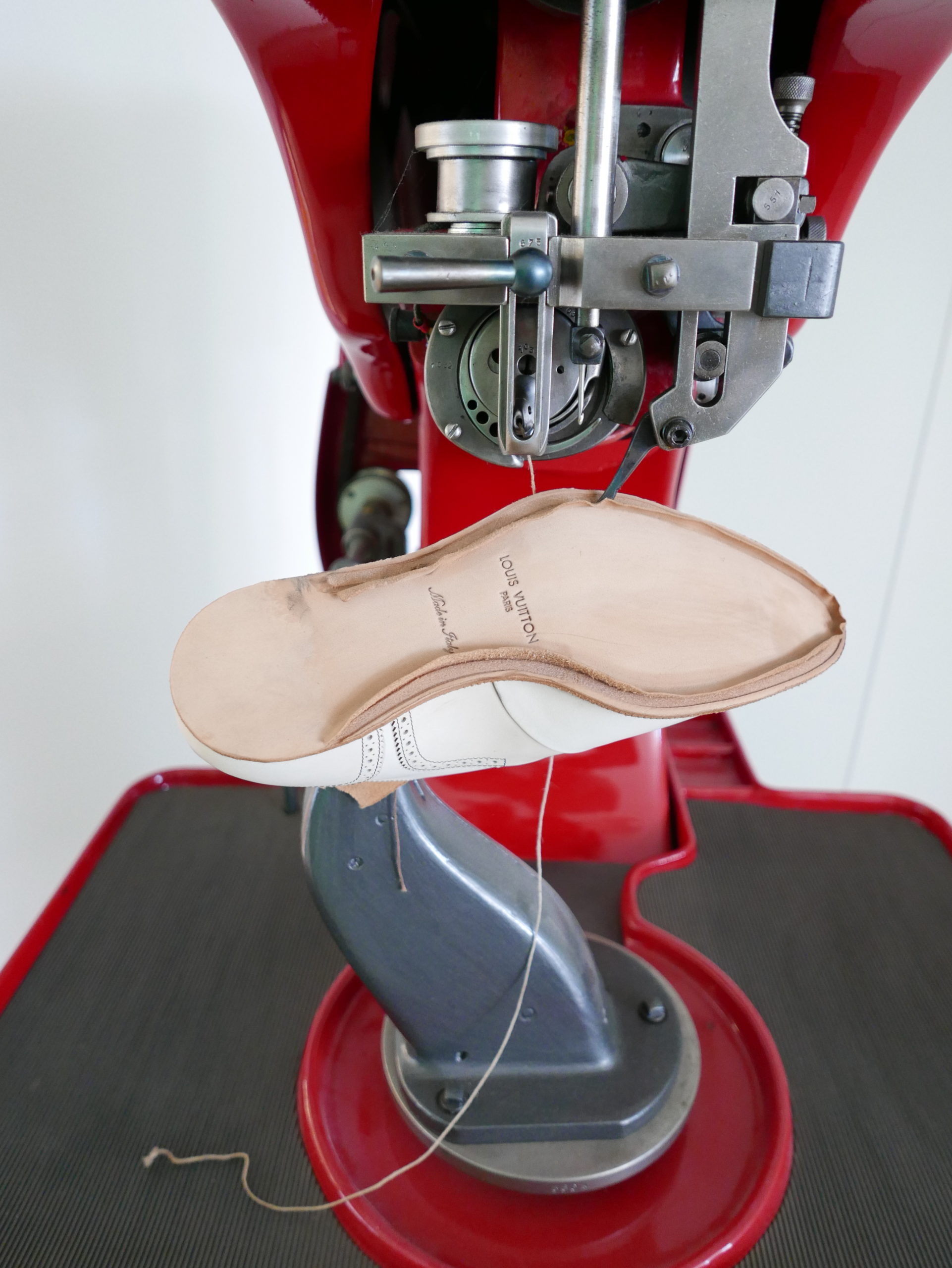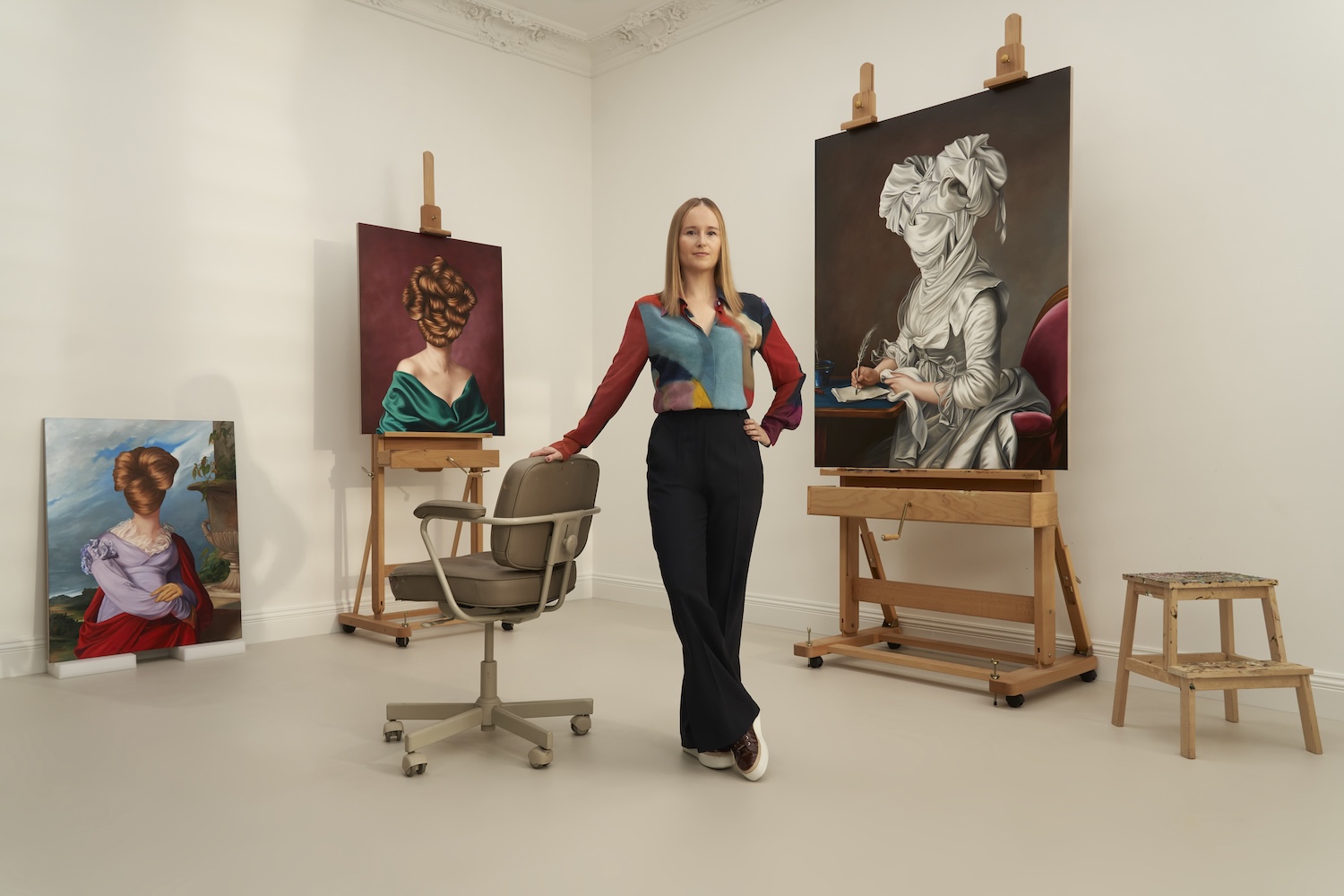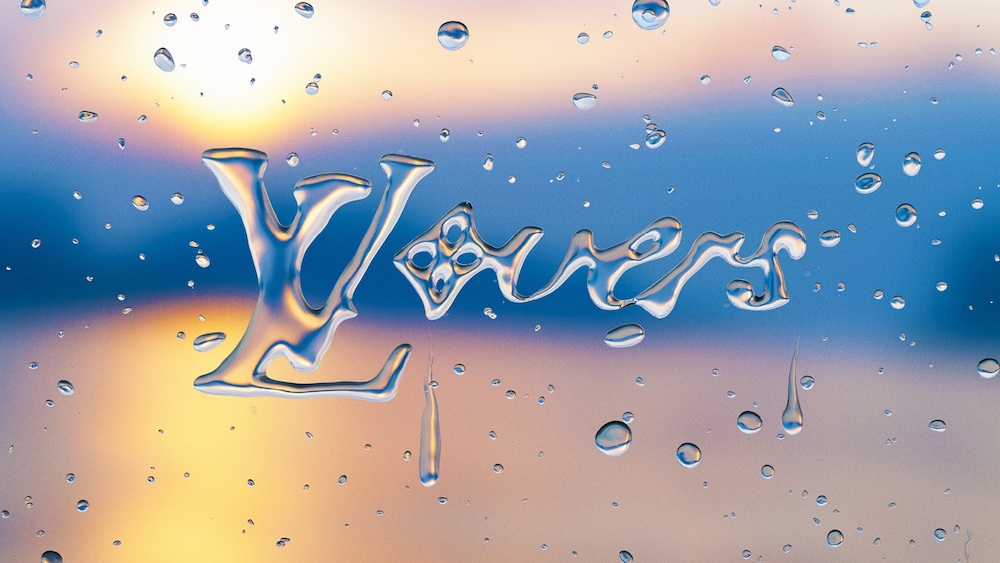The history of Louis Vuitton is steeped in the art of travel. Whether it be custom trunks or monogrammed luggage, luxe leather bags or “Les Objets Nomades,” clients can depend on the house to provide the perfect piece for their journey—and customized, too. If you dive into the archives, you’ll see decades of trunks and travel pieces painted with their owners’ initials. And like those travelers of the past, the shoe-obsessed collectors of today can now put their personal mark on their favorite pair, too. After five years of Louis Vuitton’s Run Away sneaker, the brand has launched a customizable “Now Yours” program, wherein the color, materials, and monogramming can be selected to your liking.
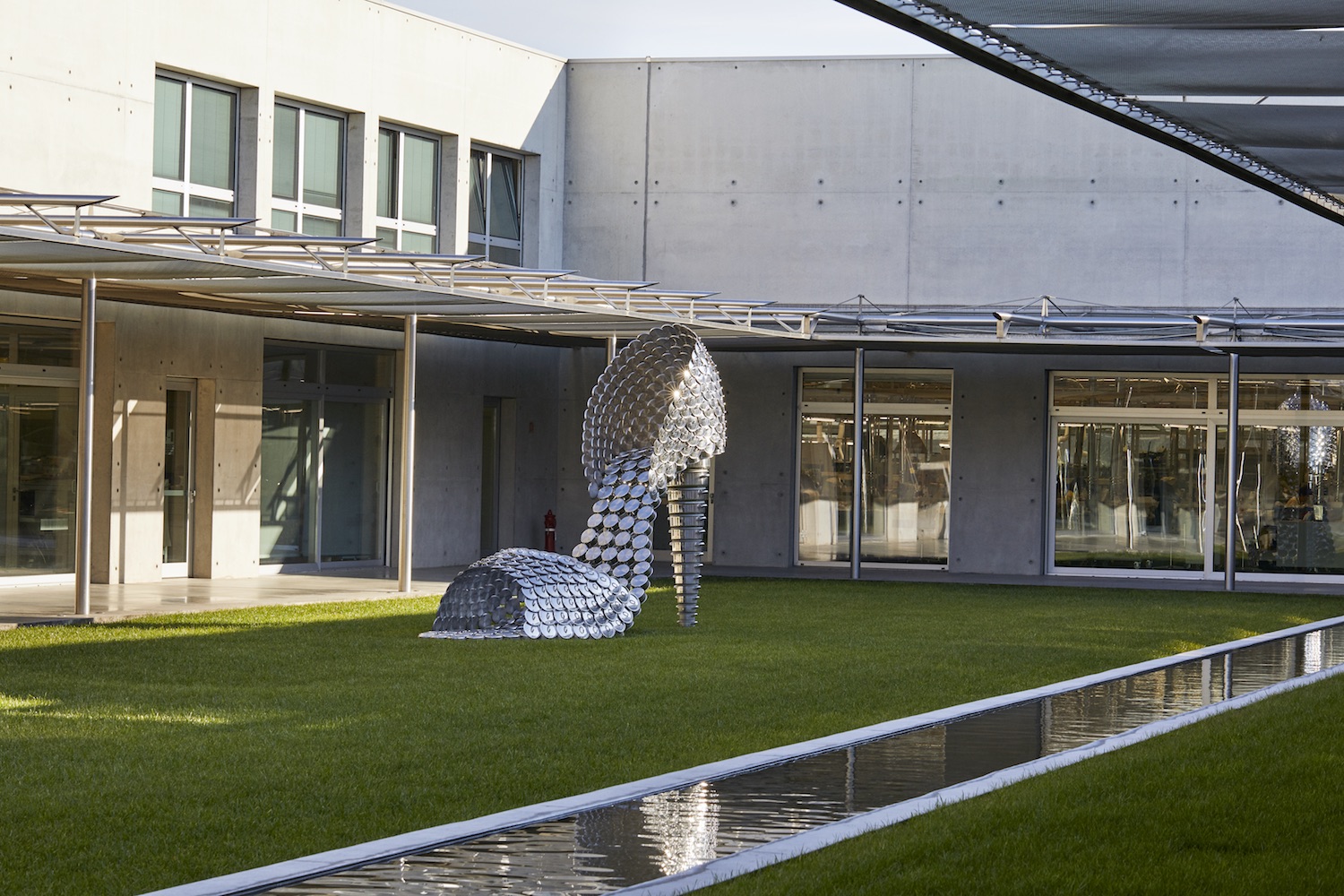
Courtesy of Louis Vuitton.
Beyond the luxury goods and design details they’re known for, what makes a Louis Vuitton product is where it’s produced and who it’s created by—measures the house takes on to ensure its savoir faire standards are met around the world. Globally, there are five locations for each department’s production: watches in Geneva; fragrance in Grasse; special orders in Asnières-sur-Seine, located in the Paris suburb; jewelry at the Place Vendôme in Paris; and shoes in Fiesso d’Artico in northern Italy. Each geographical location ensures its caliber of craft, speaking to the materials used, the preservation of artisanry, and the know-how of the community.
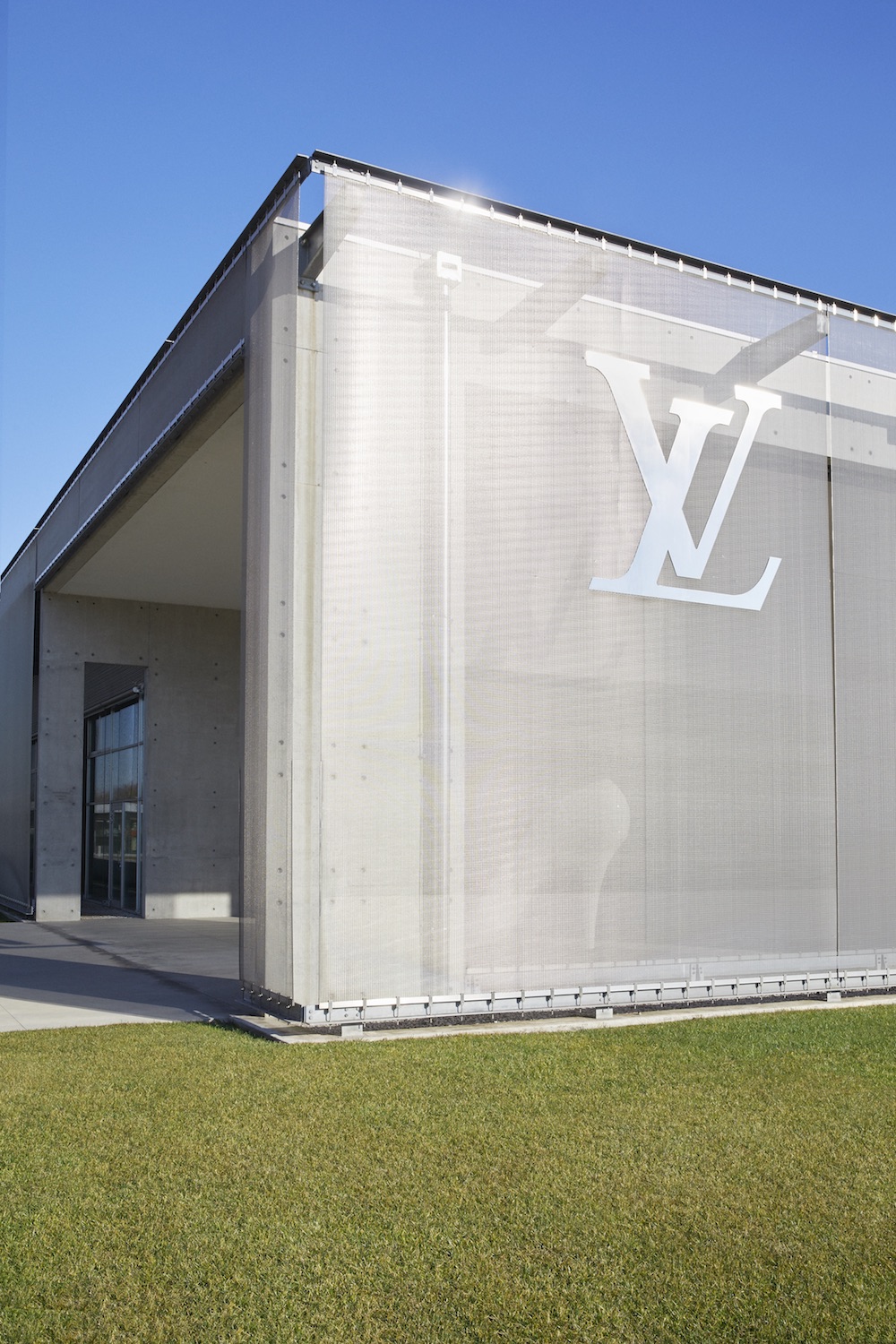
Courtesy of Louis Vuitton.
Earlier this year, we had the opportunity to design our own Run Away sneaker, selecting from endless customizable options through an online portal. It was an exciting process of choosing materials and colors to appear in designated exterior spots. Much to our surprise, there were many more aspects to the shoe than we originally thought.
Sides and soles were broken up into a series of parts that could be a customized by color or material—from “LV” Monogram to Damier check-print leather, and from bright green and deep purple to orange, yellow, and red. Racing stripes down the side could be broken up to bookend your initials. Typically one to choose classics when it comes to designer goods, we elected for the Monogram leather for the back of the shoe and on its tongue, and decided to get a little with wild purple and green accent colors for stripes, initials, and the sole.
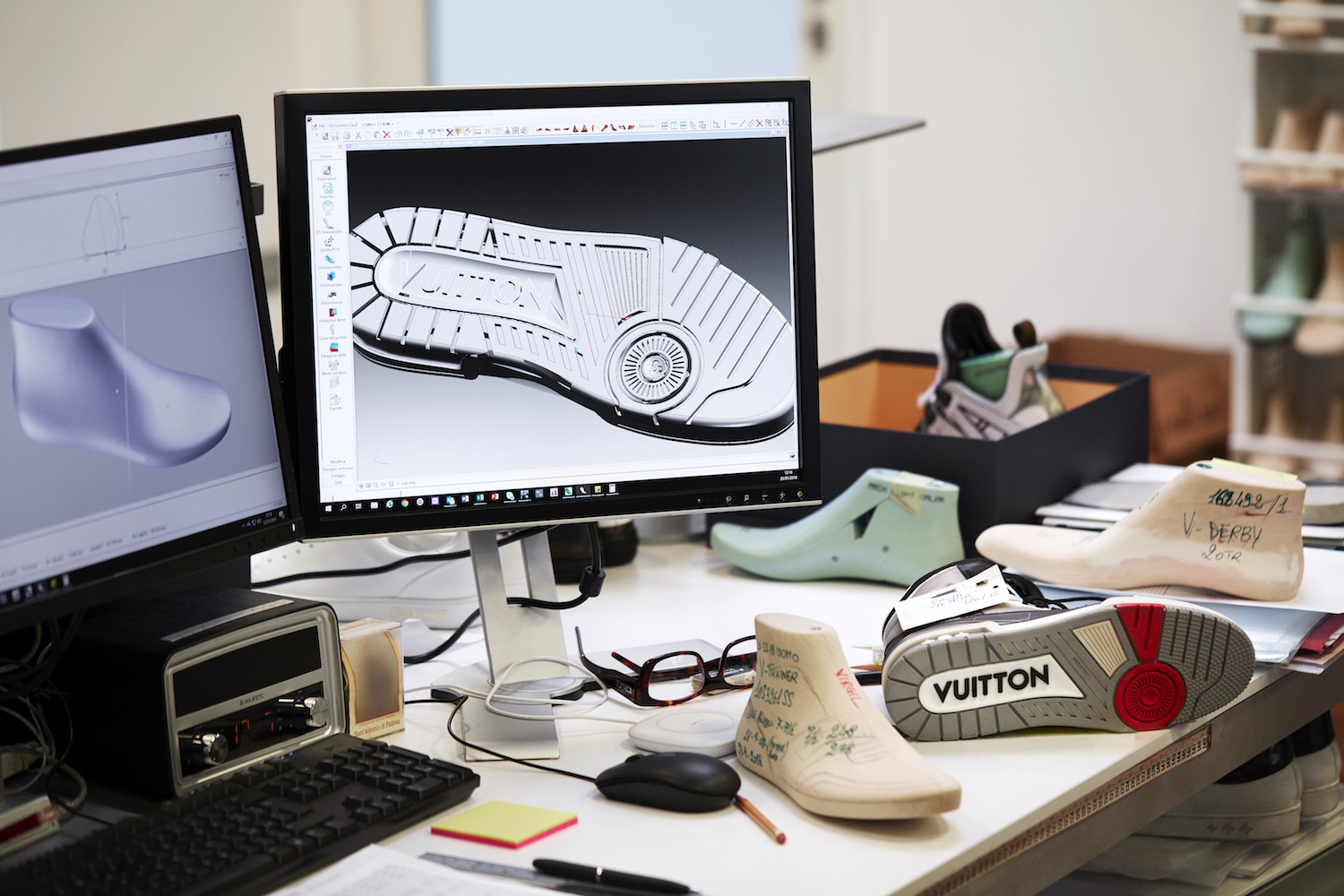
Courtesy of Louis Vuitton.
A few weeks later, we found ourselves in Fiesso d’Artico, where we got to see how our dream sneaker would be transformed into one by Louis Vuitton. The town is known for its traditional shoemaking dating back to the 13th century, when calegheri, or cobblers, established a school devoted to the craft. It is here that Louis Vuitton launched shoe production in 1998, the Manufacture de Souliers.
The modern building in which it operates from today was constructed in 2009. Architect Jean-Marc Sandrolini designed the 45,932-square-meter space to mimic a shoebox without a lid. A long, horizontal cement building is anchored at the left entrance by the first of many artworks—a white high-heeled pump sculpture entitled Venus à l’escarpin, by Jean-Jacques Ory with a remake of Sandro Botticelli’s The Birth of Venus inside.
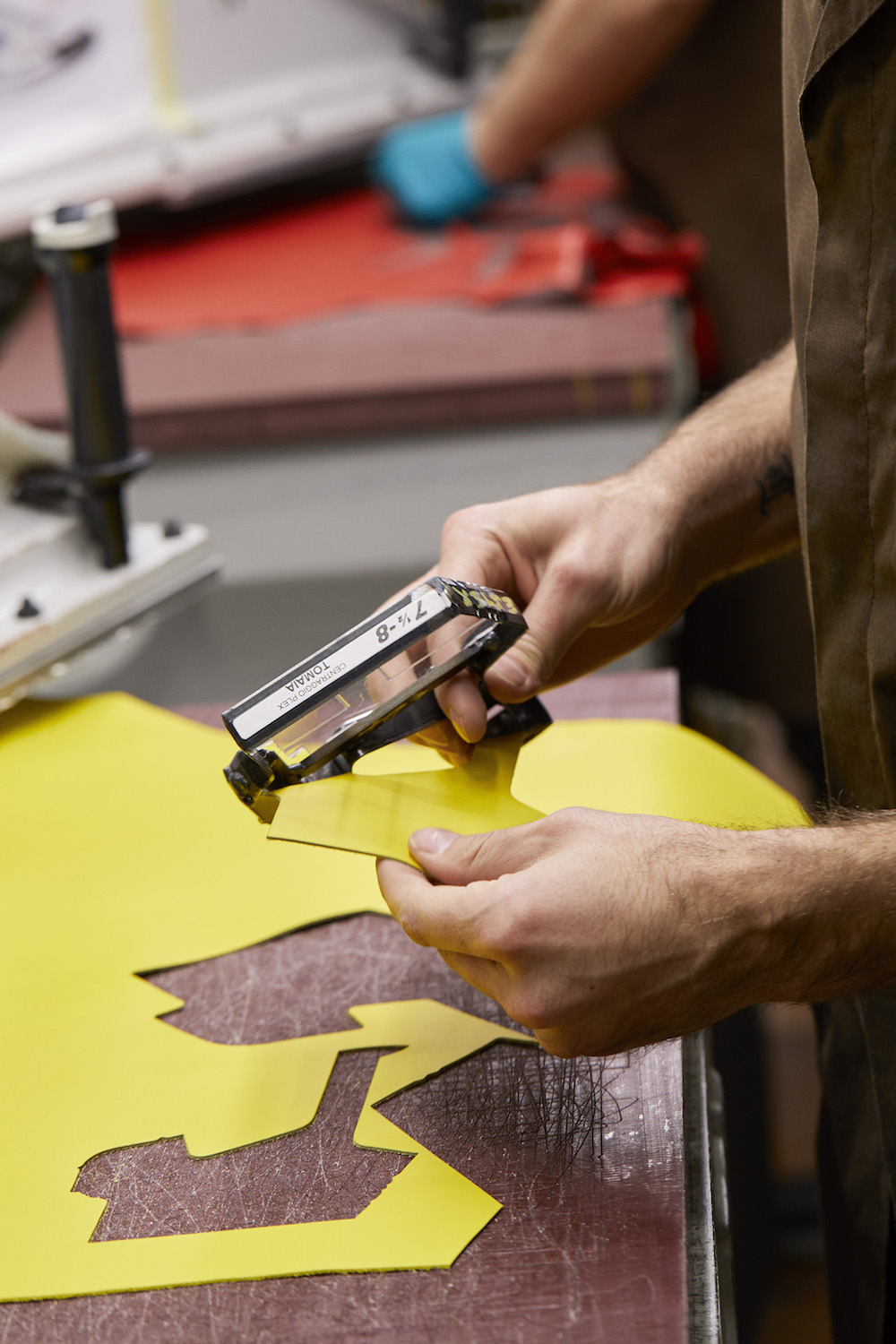
Courtesy of Louis Vuitton.
Walking in, we were soothed by the indoor-outdoor feel of the Brutalist building and its main theme—respecting both the surrounding nature and the artisans by incorporating ecological requirements like geothermal temperature control, air quality, and the use of recycled rainwater. In the center is an open-air courtyard with a lush lawn, a shallow reflection pool, and more larger-than- life shoes, like Priscilla by Joana Vasconcelos. Inside, we are first welcomed by an 853-square-foot gallery that acts as a museum and library. The space showcases ancient footwear from around the world,
like metal shoes from Thailand and boots from Mongolia. In an elegant display case, we also see a selection of the brand’s footwear, such as heels, mules, and sneakers from over the years. And on the opposite wall, a collection of rare sketches like To Shoe Or Not To Shoe and See a Shoe catch our eyes. In the space are also shoe- centric works by creators close to the house like Yayoi Kusama and Richard Prince.
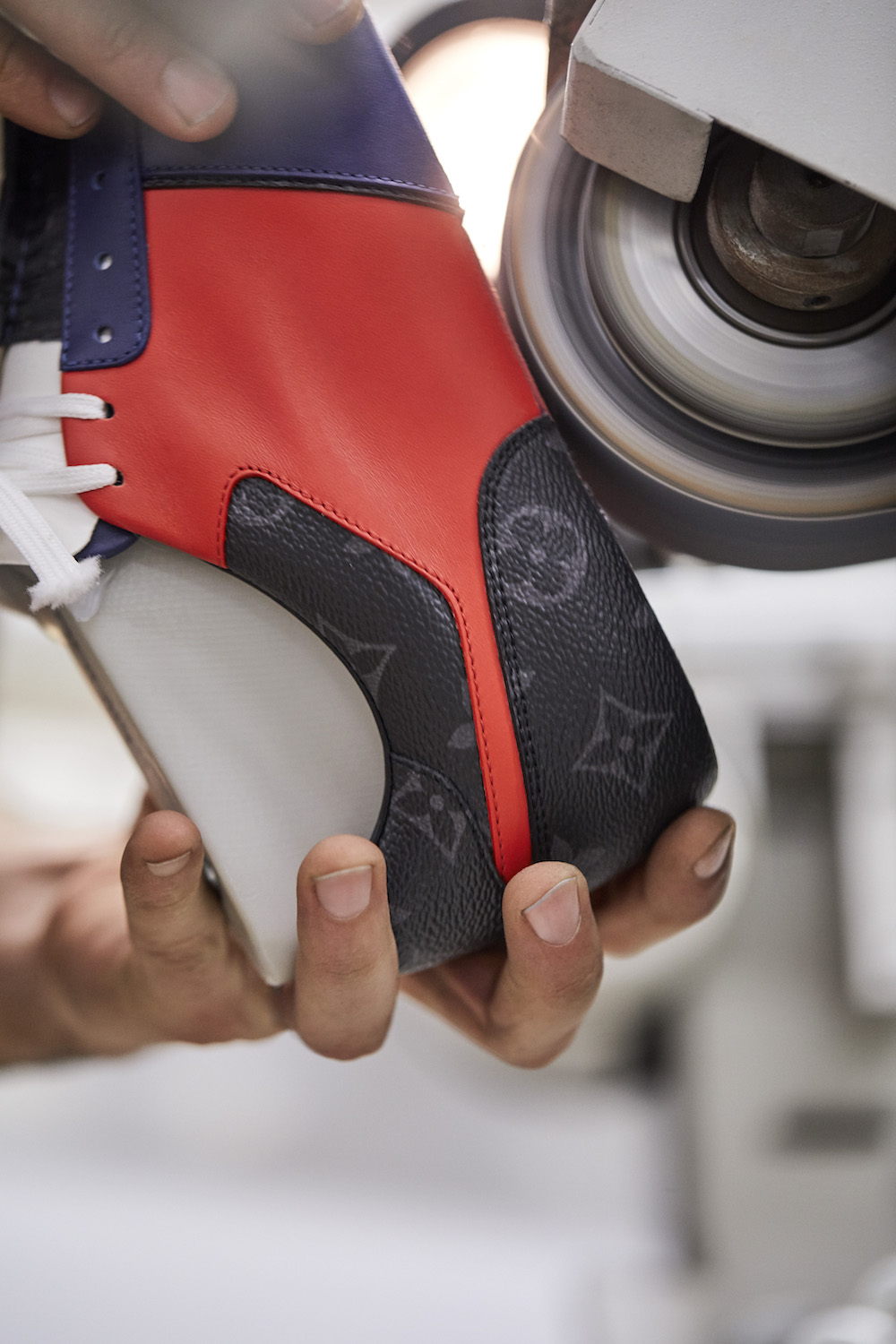
Courtesy of Louis Vuitton.
Surrounding the courtyard are four workshops: “Alma,” for women’s shoes; “Nomade,” for driving shoes; “Taiga,” for men’s shoes; and “Speedy,” for sneakers. Micro-workshops inhabit each, for activities like foot casting and hand-carving wooden models, 3-D scanning prototypes on computers, cutting leather and sewing parts together, and even a shoe- and box-wrapping station before orders are shipped. In each space, we also get a glimpse at the artists’ tools, like alligator and leather fabrics, needles and thread, and wax polishes and brushes.
Walking through the workshops, we saw firsthand the shoe’s journey from idea to actuality. Craftsmen, known as formiers, first cast a foot to use as a model, then the same shape is carved out of wood. Next, the digital team scans a 3-D CAD model for a prototype on a computer to further improve precision and speediness. The shoe is then passed on to the next workshop for material selection, placement, and assembly. This, we learned, is the process for all “firsts”—like the first Run Away sneaker five years ago. Today, the atelier works from the dimensions of this model to customize your order. From beginning to end, sketch to catwalk, there are approximately 200 separate operations required to create a Louis Vuitton shoe.
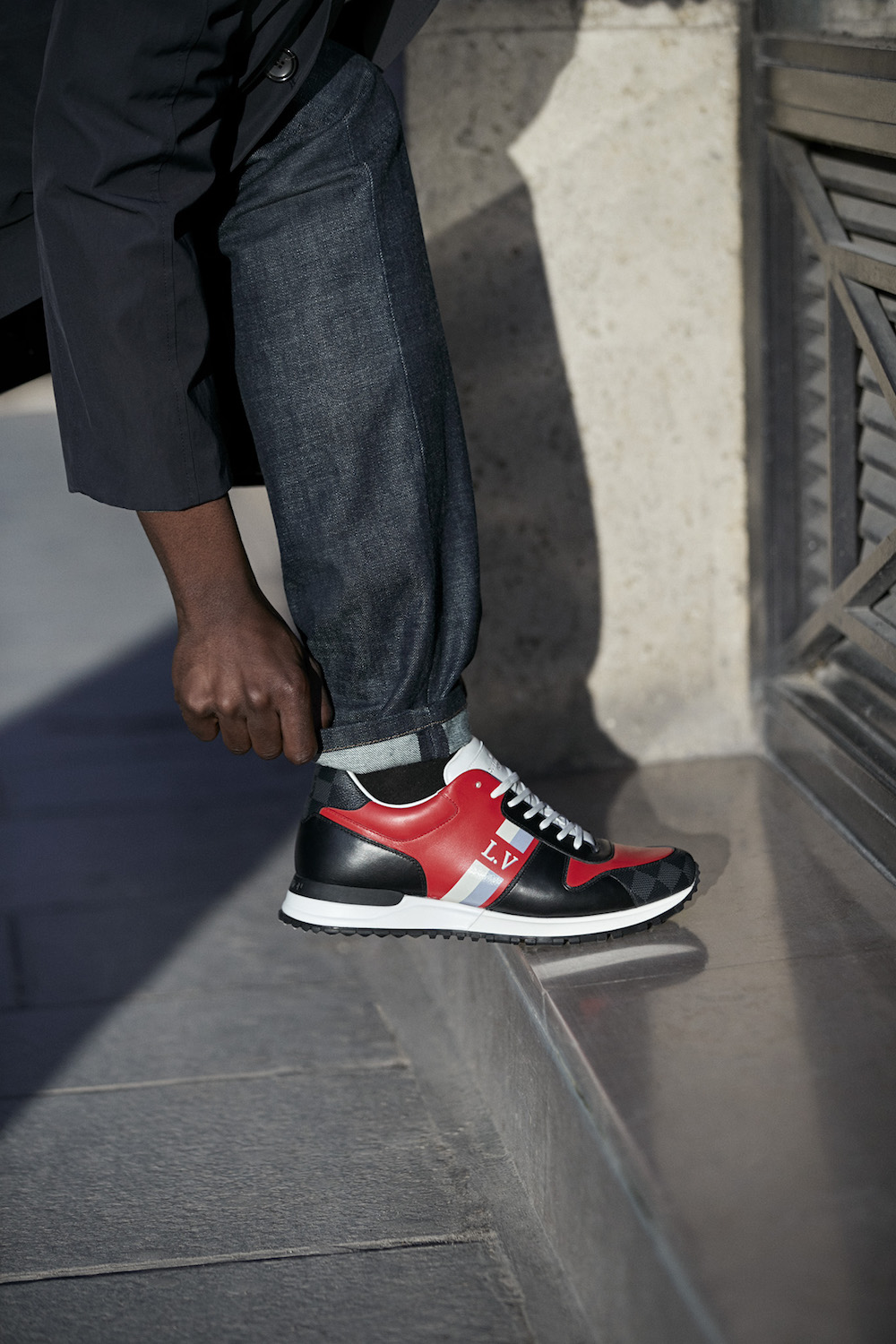
Photo by Kevin Tachman, courtesy of Louis Vuitton.
For the Run Away’s “Now Yours” program, there are approximately one billion possible combinations to choose from for the 13 different customizable areas. There are nine color options and four canvas options for each, so options for outsoles rack up to about 300 options alone. Due to the endless possibilities, accuracy when cutting, stamping, and sewing these carefully chosen parts is imperative. Every detail down to the stitch is a part of the buyer’s specific order.
Home from Italy, we had one big takeaway (other than our custom pair)—a Louis Vuitton shoe is a testament to the longevity of its craft. From the 13th century to today, the house honors hundreds of years of tradition, and billions of contemporary choices, to make something truly unique.



